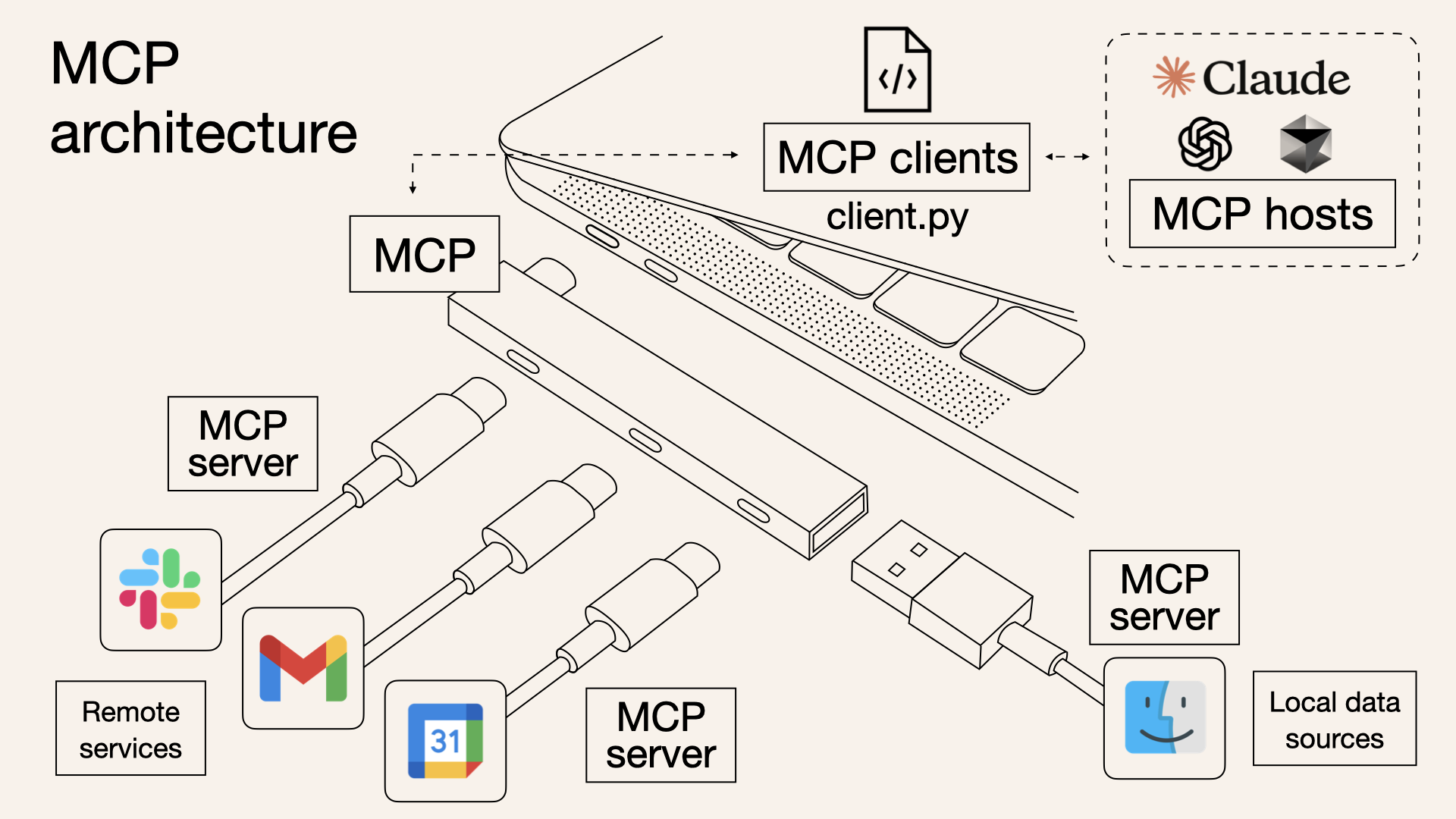Making AI Smarter: How the Model Context Protocol (MCP) Can Revolutionize Your n8n Workflows
Estimated reading time: 7 minutes
- Understand the importance of structured context for AI.
- Learn about the Model Context Protocol (MCP) and its benefits.
- Discover how n8n.io can automate business processes effectively.
- Explore practical applications and potential combinations of MCP and n8n.io.
- Get actionable steps for Canadian small business owners to implement these technologies.
Table of Contents
- The Context Conundrum: Why AI Needs More Than Just Data
- Introducing the Model Context Protocol (MCP): Standardizing AI Conversations
- Workflow Automation with n8n.io: Connecting Your Business Systems
- The Synergy: How MCP Can Be Useful with n8n.io for Powerful Automation
- Practical Takeaways for Canadian Small Business Owners
- How We Can Help
The Context Conundrum: Why AI Needs More Than Just Data
AI models, particularly Large Language Models (LLMs) like ChatGPT, Claude, and others, are incredibly powerful. They can generate text, answer questions, summarize documents, and much more. However, their performance is highly dependent on the context they are given.
Think of context as the background information, instructions, and constraints that help an AI understand what you want it to do and how you want it to do it. Without proper context, AI outputs can be:
- Generic: Lacking specificity to your business or situation.
- Inaccurate: Based on incomplete or misunderstood information.
- Inconsistent: Varying wildly depending on subtle changes in the input.
- Inefficient: Requiring multiple attempts and refinements to get the desired result.
Currently, managing context for AI models is often an ad-hoc process. This lacks standardization, making it difficult to reuse context, ensure consistency across different AI models or platforms, or reliably manage complex AI-driven tasks.
Introducing the Model Context Protocol (MCP): Standardizing AI Conversations
This is where the Model Context Protocol (MCP) steps in. As outlined on their website (https://modelcontextprotocol.io/introduction), MCP aims to be an open standard for structuring, storing, and sharing context for AI models. It’s designed to make AI interactions more reliable, repeatable, and portable.
Key concepts include:
- Context Containers: Core data structures holding all relevant information for a specific AI task.
- Structured Context: Specific fields and formats within the container ensuring organized logistics.
- Portability: Context packaged using MCP should theoretically be usable across different models, enhancing interoperability.
- Lifecycle Management: Options to manage context over time, including updating, versioning, and tracking usage.
Workflow Automation with n8n.io: Connecting Your Business Systems
Now, let’s shift gears to n8n.io. n8n is a powerful, open-source, low-code workflow automation platform. It allows you to connect hundreds of different applications and services and create automated workflows without extensive coding knowledge.
With n8n, you can automate tasks such as:
- Syncing customer data between your CRM and email list.
- Generating reports automatically from various data sources.
- Creating social media posts based on new blog entries.
- Processing incoming leads and assigning them to sales reps.
- Integrating AI capabilities into your existing processes.
n8n’s visual interface makes it relatively easy to build complex sequences of actions triggered by specific events.
The Synergy: How MCP Can Be Useful with n8n.io for Powerful Automation
The real magic happens when you consider combining the structured context management of MCP with the robust capabilities of n8n.io. Potential use cases are compelling:
- Richer, More Reliable AI Steps in Workflows: Imagine using a standardized MCP Context Container to enhance AI-generated emails.
- Context-Aware Workflow Triggering and Routing: You could trigger n8n workflows based on the content or state of an MCP Context Container.
- Building and Populating Context Containers with n8n: Design workflows to create and populate MCP Context Containers easily.
- Maintaining Context Across Multiple AI Interactions: Manage an MCP Context Container throughout a multi-step process sustaining continuity.
- Standardizing AI Integration Across the Business: Use MCP to create reusable, standardized AI components across workflows.
Practical Takeaways for Canadian Small Business Owners
While MCP is still an emerging standard, the concepts behind it are immediately relevant. Here’s what you can do now:
- Map Your Information Flows: Identify where your business data resides and how it moves throughout your organization.
- Identify High-Value AI Use Cases: Consider tasks like summarizing meeting notes or analyzing customer feedback.
- Think About Context: Explicitly define the context required for your chosen AI use cases.
- Explore n8n.io: Investigate how you can start using automation in your business processes.
- Experiment with Structured Prompts: Apply principles of structured context to enhance your AI interactions.
- Stay Informed: Monitor developments around MCP and related technologies.
How We Can Help
Navigating the evolving AI landscape can be daunting. Our Canadian-based AI consulting and workflow automation company specializes in helping businesses:
- Develop AI Strategies: Identify optimal AI opportunities.
- Implement Workflow Automation: Design and build custom n8n workflows.
- Integrate AI Solutions: Seamlessly incorporate AI into your workflows.
- Optimize Data & Context: Structure your data for effective AI implementation.
- Provide Training & Support: Empower your team to manage these powerful tools.
We understand the challenges faced by small and medium-sized businesses in Canada and tailor our solutions to be practical, affordable, and impactful.
FAQ Section
What is the Model Context Protocol (MCP)?
MCP is an open standard designed for structuring, storing, and sharing context necessary for AI models to function effectively.
How can n8n.io help my business?
n8n.io is a workflow automation platform that connects various applications and services to streamline processes without requiring extensive coding knowledge.
How does MCP enhance AI performance?
MCP enhances AI performance by providing a standardized way to manage the context that AI models need to understand specific tasks, resulting in more reliable outputs.
